Hong Kong, Kai Tak (HKG) HK-China - 1998
Kai Tak is located north of Kowloon Bay in Kowloon, Hong Kong. The vicinity is surrounded by rugged mountains. Less than 10 km to the north and northeast is a range of hills reaching an altitude of 2000 ft. To the east of the runway, the hills are less than 5 km away. Immediately to the south of the airport is the Victoria Harbour, and further south is Hong Kong Island with hills up to 2100 ft.
Landing at Kai Tak was considered challenging. Depending on the landing direction, aircraft had to pass over densely populated areas in Kowloon at low altitudes
There was only one runway at Kai Tak, oriented at 136.1 degrees and 316.1 degrees, hence its name 13/31. The runway was made by reclaiming land from the harbour and had been extended several times since its initial construction. When the airport was closed, the length of the runway was 3390 m.
At the northern end of the runway, buildings up to 6 stories rose just across the road. The other three sides of the runway were surrounded by Victoria harbour. The low altitude manoeuvre was so spectacular that some passengers have claimed to have witnessed the flickering of televisions through apartment windows as their aircraft approached the airport's landing strip.
The growth of Hong Kong also put a strain on the airport's capacity. The airport was designed to handle 24 million passengers per year but in 1996, Kai Tak had already handled 29.5 million passengers, plus 1.56 million tonnes of freight, making it the third busiest airport in the world in terms of passenger traffic, and first in terms of cargo.The airport ran out of landing slots and parking bays, and flights often had to be diverted to other airports. Moreover, the clearance requirements for aircraft takeoffs and landings made it necessary for a limit on the height of the buildings that could be built in Kowloon to be enforced. The airport also caused serious noise pollution for nearby residents. A night curfew from midnight to about 6:30 in the early morning also hindered operations.
As a result, in the late 1980s, the Hong Kong Government began searching for alternative locations for a new airport in Hong Kong to replace the aging airport. After deliberating on a number of locations including the southside of Hong Kong Island the government decided to build the airport on the island of Chek Lap Kok off Lantau Island
A huge number of resources were mobilised to build this new airport, part of the ten programmes in Hong Kong's Airport Core Programme. The new airport was officially opened on 6 July 1998; and in a testament to logistical planning, all the essential airport supplies and vehicles that were left in the old airport for operation (some of the non-essential ones had already been transported to the new airport) were transported to Chek Lap Kok in one early morning with a single massive move, after the last plane touched down at Kai Tak at 1:28 am, and before the first plane arrived at 6:25 am. Kai Tak was subsequently closed, transferring its IATA Airport Code to the replacement airport at Chek Lap Kok.
The landing approach using runway 13 at Kai Tak was distinctive. To land on runway 13, an aircraft first took a descent heading northeast. The aircraft would pass over the harbour, and then the very densely populated areas on Western Kowloon. This leg of the approach was guided by an IGS (Instrument Guidance System, a modified ILS) after 1974.
Upon reaching a small hill marked with a checkerboard in red and white, which is being marked as a middle marker in the final approach, the pilot needed to make a 47° visual right turn to line up with the runway and complete the final leg. The aircraft would be just two nautical miles from touchdown, at a height of less than 1000 ft when the turn was made
Typically the plane would enter the final right turn at the height of about 650 ft and exit it at the height of 140 ft to line up with the runway. Landing the 13 approach is already difficult with normal crosswinds since even if the wind direction is constant, it is changing relative to the airplane when the 47° visual right turn is being made.
The landing would become even more challenging when crosswinds from the northeast were strong and gusty during typhoons. The mountain range northeast of the airport also makes wind vary greatly in both speed and direction; thus, varying the lift of the airplane. This approach was used most of the time due to the prevailing wind direction in Hong Kong.
Due to the turn in final approach, no landings in runway 13 could use ILS and had to follow a Visual Approach. This made the runway unusable in low visibility conditions.
Landing from 31 was just like other normal runways in terms of landing where ILS landing was possible
For takeoffs, aircraft had to make a sharp left turn soon after takeoff to avoid the hills (a reverse of what landing traffic would do on Runway 13). Because the taxiway next to the runway would have been occupied by aircraft taxiing for takeoff, landing traffic could only exit the runway right at the end.
Despite its challenging approach and mountainous geographical surroundings, there were relatively few accidents at Kai Tak. Some of the most serious accidents at Kai Tak during its seventy years of service
The Kai Tak airport consisted of a linear terminal building with a garage attached at the rear. There were eight gates attached to the terminal building
31 August 1988 - The right outboard flap of a China CAAC Hawker Siddeley Trident hit approach lights of runway 31 while landing under rain and fog. The right main landing gear then struck a lip and collapsed, causing the aircraft to run off the runway and slip into the harbour. 7 were killed
4 November 1993 - A China Airlines Boeing 747-400, China Airlines Flight 605,over ran the runway while landing during a typhoon. The wind was gusting to gale force at the time. Despite the plane's unstable approach the captain did not go around. It touched down more than 2/3 down the runway and was unable to stop before the runway ran out.
On July 6, 1998 at 1:28 am, Kai Tak was finally retired as an airport. The new airport took over HKG, Kai Tak's IATA code.
11 April 1955 - Air India "Kashmir Princess" (Lockheed Constellation) went down on the sea after a bomb explosion, killing 16 people. A Kuomintang (KMT) secret agent put the bomb in the airplane during its transit in Hong Kong Airport intending to kill People's Republic of China (PRC) Prime Minister Zhou Enlai
Many aviation enthusiasts were upset at the demise of Kai Tak because of the unique approach !
![]() Good bye Kai Tak, we will never forget !!!
Good bye Kai Tak, we will never forget !!!
Kai Tak Airport (Chinese: 啟德機場) was the international airport of Hong Kong from 1925 until 1998. It was officially known as the Hong Kong International Airport (Chinese: 香港國際機場) from 1954 to July 6, 1998, when it was closed and replaced by the new Hong Kong International Airport at Chek Lap Kok, 30 km to the west. It is often known as Hong Kong Kai Tak International Airport (Chinese: 香港啟德國際機場), or simply Kai Tak, to distinguish it from its successor which is often referred to as Chek Lap Kok Airport (赤鱲角機場).
The airport was home to Hong Kong's international carrier Cathay Pacific, as well as regional carrier Dragonair, freight airline Air Hong Kong and Hong Kong Airways. With numerous skyscrapers and mountains located to the north and its only runway jutting out into Victoria Harbour, landings at the airport were infamously difficult.
The airport was also home to the former RAF Kai Tak.
History
The story of Kai Tak started in 1924. The location of Kai Tak belonged to two plutocrats Ho Kai and Au Tak, who owned the land before the government acquired it (the land originally did not have a name), which explains the name of the airport. First planned as an estate site, the land was given to the government after the plan failed. Later Harry Abbot opened a flying school on the piece of land. Soon, it became a small airport for the Royal Air Force, flying clubs and pilot training centre. In 1928, a concrete slipway was built for seaplanes that used the adjoining Kowloon Bay.
In 1936, the first domestic airline in Hong Kong was established.
Hong Kong fell into the hands of the Japanese in 1941 during World War II. In 1943 the Japanese army extended Kai Tak, using many Canadian prisoner-of-war labourers, building an additional runway that extended across Clear Water Bay Road. During the process, its construction destroyed the historic wall of the Kowloon Walled City, as well as the 45 m (148 ft) tall Sung Wong Toi — a memorial for the last Song dynasty emperor, for materials. Japan surrendered shortly after the completion of the second runway in 1945.
From September 1945 to August 1946 it was a Royal Navy shore base "HMS Nabcatcher" the name previously attached to a Mobile Naval Air Base for the Fleet Air Arm. On 1 April 1947 a Royal Navy air station HMS Flycatcher was commissioned there.
An official plan to modify Kai Tak to a modern airport was released in 1954.In 1957, the original runways were replaced by a new NW/SE heading 2194 m runway extending into the Kowloon Bay completed by land reclamation. The runway was extended to 2529 m in 1970 and again to 3390 m in 1975. In 1962, the passenger terminal was completed and Kai Tak was renamed Hong Kong International Airport.
An Instrument Guidance System (IGS) was installed in 1974 to aid landing on runway 13. Utilization of the airport under adverse conditions was greatly increased.
At its beginning, Kai Tak was "far away" from residential areas, but as both residential areas and the airport expanded, Kai Tak became too close to the residential areas. Its usage was also close and for some time exceeding the designed capacity. There was much talk about a new airport but nothing came of it, for various reasons. Finally in 1990, partly to boost the confidence of the population in the future of Hong Kong after the Tiananmen Square protests of 1989, the Hong Kong Government decided to go ahead with the so-called "Rose Garden Plan" of which the Chek Lap Kok International Airport was the centrepiece.
On July 6, 1998 at 1:28 am, Kai Tak was finally retired as an airport. The new airport took over HKG, Kai Tak's IATA code. The passenger terminal was later being used as government offices, automobile dealerships, a go kart racecourse, snooker, recreational facilities, a bowling alley, car sales showrooms and a golf range. Government reports later reviewed that Chep Lap Kok airport was not ready to be opened to public despite trial runs were held. Water supply and sewage were not installed completely. Telephones were available but the lines were not connected. The baggage system did not undergo an extensive troubleshoot and dislocated passengers' baggages as well as cargoes which many were perishable goods. The government decided to temporarily reactivate the cargo terminal to be minimize the damage caused by a software bug in the new airport's cargo handling system. By December 2003 and January 2004, the passenger terminal was demolished.
Geographic environment
Kai Tak was located on the north side of Kowloon Bay in Kowloon, Hong Kong. The vicinity is surrounded by rugged mountains. Less than 10 km to the north and northeast is a range of hills reaching an altitude of 2,000 ft (610 m). To the east of the runway, the hills are less than 5 km away. Immediately to the south of the airport is Victoria Harbour, and further south is Hong Kong Island with hills up to 2,100 ft (640 m).
When Kai Tak closed there was only one runway in use, numbered 13/31 and oriented southeast/northwest (134/314 degrees true, 136/316 degrees magnetic). The runway was made by reclaiming land from the harbour and had been extended several times since its initial construction. The runway was 3,390 m long when the airport closed.
At the northern end of the runway, buildings rose up to six stories just across the road. The other three sides of the runway were surrounded by Victoria Harbour. The low altitude manoeuvre required to line up with the runway was so spectacular that some passengers claimed to have glimpsed the flickering of televisions through apartment windows along the final approach.
1920s to 1930s
The story of Kai Tak started in 1922 when two businessmen Ho Kai and Au Tak formed the Kai Tak Investment Company in order to reclaim land in Kowloon for development.The land was acquired by the government for use as an airfield after the business plan failed.
In 1924, Harry Abbott opened The Abbott School of Aviation on the piece of land. Soon, it became a small grass strip airport for the RAF and several flying clubs which, over time, grew to include the Hong Kong Flying Club, the Far East Flying Training School, and the Aero Club of Hong Kong which exist today as an amalgamation known as the Hong Kong Aviation Club. In 1928, a concrete slipway was built for seaplanes that used the adjoining Kowloon Bay which can be seen in old photographs. The first control tower and hangar at Kai Tak were built in 1935. In 1936, the first domestic airline in Hong Kong was established
World War II
Hong Kong fell into the hands of the Japanese in 1941 during World War II. In 1942 the Japanese army expanded Kai Tak, using many Allied prisoner-of-war (POW) labourers, creating two concrete runways, 13/31 and 07/25. Numerous POW diary entries exist recalling the grueling work and long hours working on building Kai Tak. During the process, its construction destroyed the historic wall of the Kowloon Walled City, as well as the 45 m (148 ft) tall Sung Wong Toi — a memorial for the last Song dynasty emperor, for materials. A 2001 Environmental Study recommended a new memorial be erected for the Sung Wong Toi rock and other remnants of the Kowloon area before Kai Tak
1940s to 1970s
From September 1945 to August 1946 it was a Royal Navy shore base "HMS Nabcatcher" the name previously attached to a Mobile Naval Air Base for the Fleet Air Arm. On 1 April 1947 a Royal Navy air station HMS Flycatcher was commissioned there.
An official plan to modify Kai Tak to a modern airport was released in 1954. In 1957, the original runways were replaced by a new NW/SE heading 2194 m runway extending into the Kowloon Bay completed by land reclamation. The runway was extended to 2529 m in 1970 and again to 3390 m in 1975. In 1962, the passenger terminal was completed.
An Instrument Guidance System (IGS) was installed in 1974 to aid landing on runway 13. Utilization of the airport under adverse conditions was greatly increased.
Overcrowding in the 1980s and 1990s
The growth of Hong Kong also put a strain on the airport's capacity. Its usage was close to, and for some time, exceeded the designed capacity. The airport was designed to handle 24 million passengers per year but in 1996, Kai Tak handled 29.5 million passengers, plus 1.56 million tonnes of freight, making it the third busiest airport in the world in terms of international passenger traffic, and first in terms of international cargo throughput. Moreover, clearance requirements for aircraft takeoffs and landings made it necessary to limit the height of buildings that could be built in Kowloon. While Kai Tak was initially located far away from residential areas, the expansion of both residential areas and the airport resulted in Kai Tak being in close proximity to residential areas. This caused serious noise pollution for nearby residents. A night curfew from midnight to about 6:30 in the early morning also hindered operations.
As a result, in the late 1980s, the Hong Kong Government began searching for alternative locations for a new airport in Hong Kong to replace the aging airport. After deliberating on a number of locations, including the south side of Hong Kong Island, the government decided to build the airport on the island of Chek Lap Kok off Lantau Island. A huge number of resources were mobilised to build this new airport, part of the ten programmes in Hong Kong's Airport Core Programme.
The new airport officially opened on 6 July 1998. In a testament to logistical planning, all essential airport supplies and vehicles that were left in the old airport for operation (some of the non-essential ones had already been transported to the new airport) were transported to Chek Lap Kok in one early morning with a single massive move. Kai Tak was subsequently closed, transferring its ICAO and IATA airport codes to the replacement airport at Chek Lap Kok.
On July 6, 1998 at 01:28, after the last aircraft departed for Chek Lap Kok, Kai Tak was finally retired as an airport. After 77 years of breathtaking landings, the final entries made in the control tower log book were simple, short and un-ceremonial:
- The last arrival: Dragonair KA841 from Chongqing (A320-200) landed runway 13 at 23:38
- The last departure: Cathay Pacific CX251 to London Heathrow (A340) took off from runway 13 at 00:02
A small ceremony celebrating the end of the airport was held inside the control tower after the last flight took off. A small speech was given, and the controller's last words as he switched off the runway lights were simply, "Goodbye Kai Tak, and thank you".
The passenger terminal was later used for government offices, automobile dealerships and showrooms, a go-kart racecourse, a bowling alley, a snooker hall, a golf range and other recreational facilities. Government reports later revealed that Chep Lap Kok airport was not completely ready to be opened to the public despite trial runs held. Water supply and sewage were not installed completely. Telephones were available but the lines were not connected. The baggage system did not undergo extensive troubleshooting and passenger baggage as well as cargo, much of which was perishable, were lost. The government decided to temporarily reactivate Kai Tak's cargo terminal to minimise the damage caused by a software bug in the new airport's cargo handling system.
The runway was used as a venue for Celine Dion's January 25, 1999 concert on her Let's Talk About Love Tour. Between December 2003 and January 2004, the passenger terminal was demolished.
Many aviation enthusiasts were upset at the demise of Kai Tak because of the unique runway 13 approach. As private aviation is not allowed at Chek Lap Kok (moved to Sek Kong Airfield), some enthusiasts had lobbied to keep around 1 km of the Kai Tak runway for general aviation, but the suggestion was rejected as the Government had planned to build a new cruise terminal at Kai Tak.
The name Kai Tak is one of the names submitted by Hong Kong used in the lists of tropical cyclone names in the northwest Pacific Ocean.
The landing approach using runway 13 at Kai Tak was spectacular and world-famous. To land on runway 13, an aircraft first took a descent heading northeast. The aircraft would pass over the crowded harbour, and then the very densely populated areas of Western Kowloon. This leg of the approach was guided by an IGS (Instrument Guidance System, a modified ILS) after 1974.
Upon reaching a small hill marked with a checkerboard in red and white, used as a visual reference point on the final approach (in addition to the middle marker on the Instrument Guidance System), the pilot needed to make a 47° visual right turn to line up with the runway and complete the final leg. The aircraft would be just two nautical miles (3.7 km) from touchdown, at a height of less than 1,000 feet (300 m) when the turn was made. Typically the plane would enter the final right turn at a height of about 650 feet (200 m) and exit it at a height of 140 feet (43 m) to line up with the runway. This manoeuver has become widely known in the piloting community as the "Hong Kong Turn".
Landing the runway 13 approach was already difficult with normal crosswinds since even if the wind direction was constant, it was changing relative to the aeroplane during the 47° visual right turn. The landing would become even more challenging when crosswinds from the northeast were strong and gusty during typhoons. The mountain range northeast of the airport also makes wind vary greatly in both speed and direction, thus varying the lift of the aeroplane. From a spectator's point of view, watching large Boeing 747s banking at low altitudes and taking big crab angles during their final approaches was quite thrilling. Despite the difficulty, the runway 13 approach was nonetheless used most of the time due to the prevailing wind direction in Hong Kong.
Due to the turn in final approach, ILS was not available for runway 13 and landings had to follow a visual approach. This made the runway unusable in low visibility conditions
Runway 31 approach
Landings on runway 31 were just like those on other normal runways where ILS landing was possible. Since the taxiway next to the runway would have been occupied by aircraft taxiing for takeoff, landing traffic could only exit the runway right at the end.
When lined up for takeoff on runway 31, Lion Rock and Mt. Parker would be right in front of the aircraft. The aircraft had to make a sharp 65-degree left turn soon after takeoff to avoid the hills (a reverse of what landing traffic would do on Runway 13).
Accidents at Kai Tak
Despite the challenging approach and mountainous geographical surroundings, there were relatively few accidents at Kai Tak. There were many instances of significant aircraft damage from unstabilised approaches, particularly following the "checkerboard turn" to Runway 13 in strong crosswinds and turbulence (damaged landing gear, engine nacelles and flaps slammed onto the runway, excursions off the runway, etc.). Some of the most serious accidents at Kai Tak during its seventy years of service were:
- 21 December 1948 - A Douglas DC-4 of Civil Air Transport struck Basalt Island after a descent through clouds. 33 were killed.
- 24 February 1949 - A Douglas DC-3 of Cathay Pacific crashed into a hillside near Braemar Reservoir after aborting an approach in poor visibility and an attempt to go around. All 23 onboard were killed.
- 11 March 1951 - A Douglas DC-4 of the Pacific Overseas Airlines crashed after takeoff into the hills between Mount Butler and Mount Parker on the Hong Kong Island. The Captain of the aircraft allegedly failed to execute the turn left operation after departure. 23 were killed.
- 9 April 1951 - A Douglas DC-3 of Siamese Airways lost control on its turn while attempting a night-time visual approach. The captain allegedly allowed the aircraft to lose flying speed while attempting to turn quickly. 16 were killed.
- Jan 1961 - A US military Douglas DC-3 crashed on Mount Parker after takeoff.
- 24 August 1965 - A US Marines Lockheed Hercules C-130 lost control shortly after takeoff from runway 13. The plane plunged and sank into the harbour. 59 of the 71 Marines on board were killed. This was the deadliest accident at Kai Tak.
- 30 June 1967 - A Thai Airways International Sud Aviation SE-210 Caravelle III crashed into the sea while landing during a typhoon. The co-pilot, who was flying the aircraft, allegedly made an abrupt heading change, causing the aircraft to enter into a high rate of descent and a crash into the sea short of the runway. 24 were killed.
- 2 September 1977 - A Canadair CL-44 of Transmeridian Air Cargo lost control and crashed into the sea on fire shortly after takeoff. The no. 4 engine was said to have failed, causing an internal fire in the engine and the aircraft fuel system that eventually resulted in a massive external fire. 4 were killed.
- 9 March 1978 - A hijacker boarded a China Airlines Boeing 737-200, demanding to be taken to China. The hijack lasted less than a day, and the hijacker was killed.
- 31 August 1988 - The right outboard flap of a Civil Aviation Administration of China Hawker Siddeley Trident hit approach lights of runway 31 while landing under rain and fog. The right main landing gear then struck a lip and collapsed, causing the aircraft to run off the runway and slip into the harbour. 7 were killed.
- 4 November 1993 - A China Airlines Boeing 747-400, China Airlines Flight 605, overran the runway while landing during a typhoon. The wind was gusting to gale force at the time. Despite the plane's unstable approach the captain did not go around. It touched down more than 2/3 down the runway and was unable to stop before the runway ran out.
- 23 September 1994 - A Heavylift Cargo Airlines Lockheed L-100-30 Hercules lost control shortly after takeoff from runway 13. The pitch control system of one of its propellers was said to have failed. 6 were killed.
In addition, accidents and incidents of flights departing and arriving from Kai Tak include:
- One of the world's early commercial aircraft hijacks was that of Miss Macao, a Catalina operated by a Cathay Pacific subsidiary, which was bound for Hong Kong. Shortly after takeoff in Macau on July 16, 1948, four armed hijackers entered the cockpit. The hijackers shot the pilot, whose wounded body fell onto the control stick, causing the plane to crash into the sea. Twenty-six were killed; only the hijack leader survived.
- 23 July 1954 - Cathay Pacific VR-HEU flying from Bangkok to Kai Tak was shot down by PLAAF over international waters south of Hainan Island.
- 11 April 1955 - Air India "Kashmir Princess", a Lockheed Constellation, crashed into the sea after a bomb explosion, killing 16. A Kuomintang agent had planted the bomb on the plane during its transit in Hong Kong Airport in an attempt to kill People's Republic of China Prime Minister Zhou Enlai.
- 4 March 1966 - Canadian Pacific Airlines Flight 402 flying from Kai Tak to Tokyo crashed during final approach at Tokyo International Airport (Haneda) due to poor weather and visibility.
- 5 March 1966 - BOAC Flight 911 from Tokyo International Airport (Haneda) disintegrated and crashed near Mount Fuji, Japan, due to severe turbulance.
- 15 June 1972 - Cathay Pacific Flight 700Z from Bangkok to Kai Tak crashed in Vietnam after a bomb exploded on board.
- 26 May 1991 - Lauda Air Flight 004 from Kai Tak to Vienna via Bangkok. The aircraft disintegrated in mid-air after taking off from Bangkok due to malfunctioned thrust-reverse of an engine deployed in flight.
- 23 March 1994 - Aeroflot Flight 593 from Sheremetyevo International Airport crashed near Mezhdurechensk after the pilot brought his children to the cockpit.


/https%3A%2F%2Fprofilepics.canalblog.com%2Fprofilepics%2F8%2F1%2F81057.jpg)
/https%3A%2F%2Fstorage.canalblog.com%2F20%2F39%2F97146%2F32300127_o.jpg)
/https%3A%2F%2Fstorage.canalblog.com%2F12%2F78%2F97146%2F30672854_o.jpg)
/https%3A%2F%2Fstorage.canalblog.com%2F26%2F90%2F97146%2F27985019_o.jpg)
/https%3A%2F%2Fstorage.canalblog.com%2F37%2F46%2F97146%2F27230276_o.jpg)
/https%3A%2F%2Fstorage.canalblog.com%2F33%2F59%2F97146%2F21981067_o.jpg)

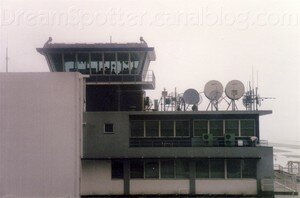
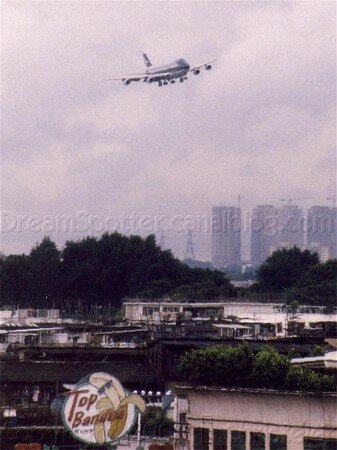

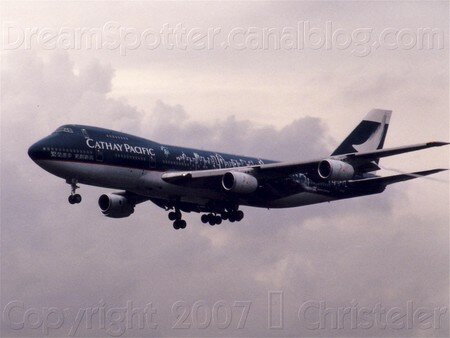





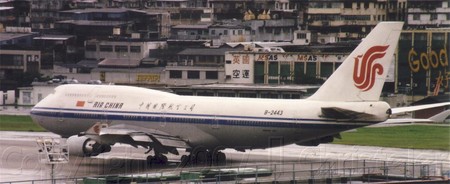






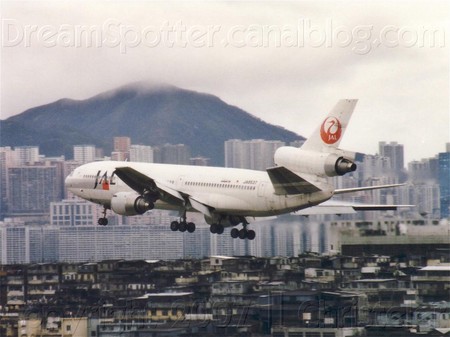





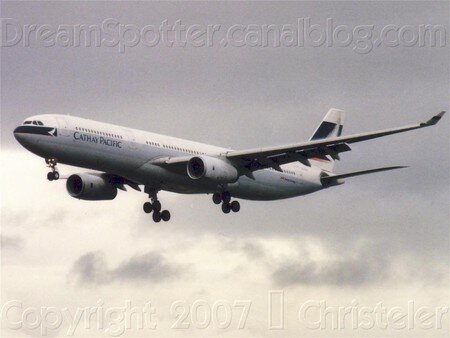

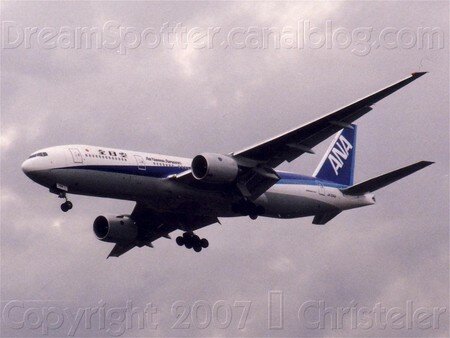



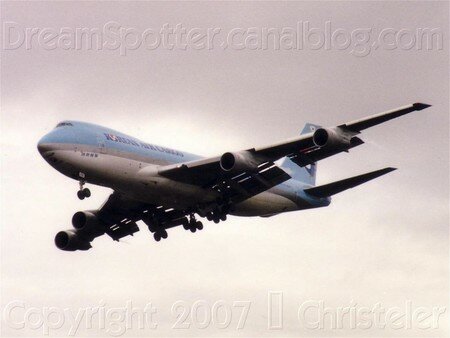










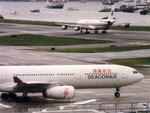


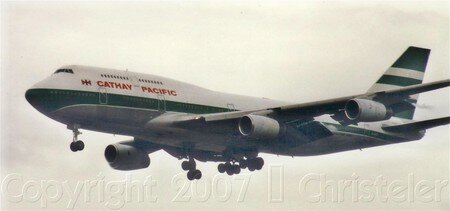




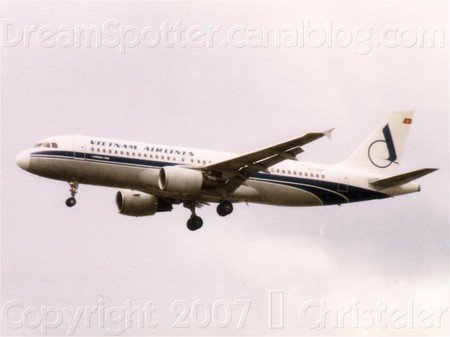


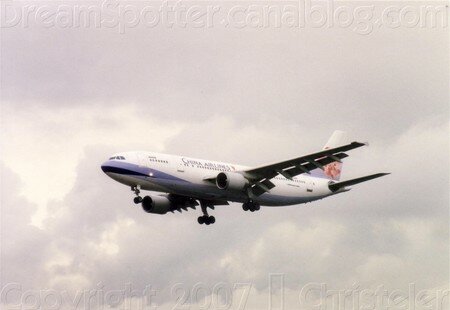


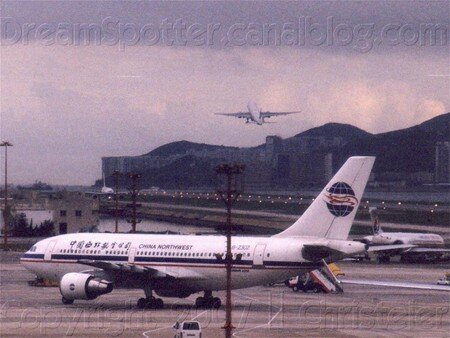
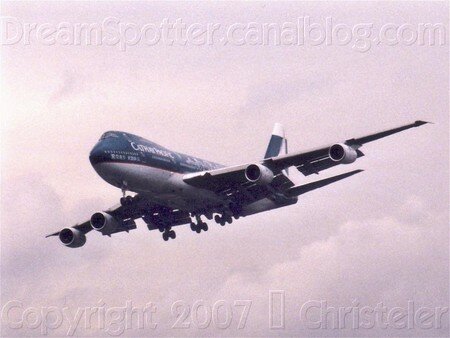
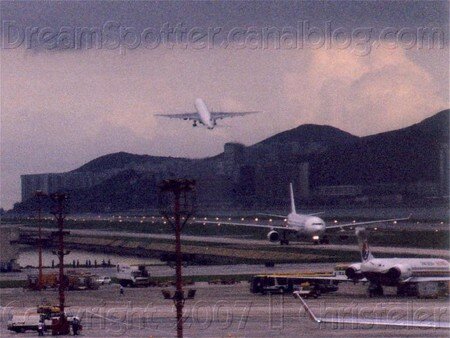




/http%3A%2F%2Fstorage.canalblog.com%2F69%2F39%2F97146%2F77013709_o.jpg)
/http%3A%2F%2Fstorage.canalblog.com%2F68%2F33%2F97146%2F70504198_o.jpg)
/http%3A%2F%2Fstorage.canalblog.com%2F99%2F48%2F97146%2F50226759_p.jpg)
/http%3A%2F%2Fstorage.canalblog.com%2F25%2F77%2F97146%2F47151373_o.jpg)